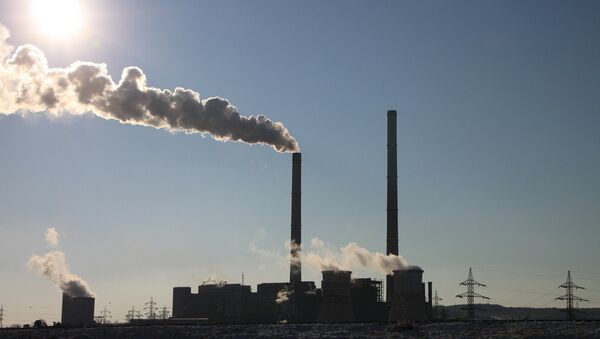The UK Department for Business, Energy and Industrial Strategy (BEIS), a government department created by Prime Minister Theresa May in 2016, has released data which shows that greenhouse emissions fell by 6 percent in 2016.
Carbon dioxide, one of the main greenhouse gases, was down by 7 percent compared to 2015.
Official provisional estimates of 2016 UK greenhouse gas emissions show 42% reduction since 1990: https://t.co/1eb60yC4JD pic.twitter.com/GsYphxH7sB
— Dept for BEIS (@beisgovuk) 30 March 2017
The department attributed several reasons for the fall in greenhouse emissions with a major contributing factor being that people were using less coal for electricity.
Coal use in the UK has fallen 74 percent since 2006 and is now 12 times below the record used in 1956. The demand has fallen precipitously because of cheaper gas, the expansion of renewables and alternative energy and the closure of Britain's biggest steelmaker in Redcar in late 2015.
The amount of coal burned in the UK is falling rapidly, new government data shows.
— Skeptical Science (@skepticscience) December 25, 2016
The collapse has been… https://t.co/j5HKE9ooqO
In 2016, three coal-fired power stations closed in the UK and as a result, UK wind farms generated more power than coal in 2016, even though wind output declined slightly compared to 2015.
BEIS also reported that the energy sector emissions were down by 19 percent year on year, as coal plants closed or switched to biomass. There was also an increase in the use of gas, which is a less polluting fossil fuel.
The amount of carbon dioxide which has been omitted by the energy supply sector has also fallen by more than 54 percent since 1990.
All of this has signified good news for environmentalist who have been pushing for greenhouse gas emissions to be reduced in the UK for some time.
Overall the UK's greenhouse gas emissions have dropped by 42 percent since 1990, and carbon dioxide output is down 37 percent since then.
In 2016, emissions from business and industrial processes also dropped, but transport, homes and the public sector all saw slight rises.
However it wasn't all good news — while CO2 emissions from coal collapsed, CO2 from gas increased by 12.5 percent in 2016, as electric utilities switched from burning coal. But despite this increase, gas use remains well below the highs seen in the 2000s.



